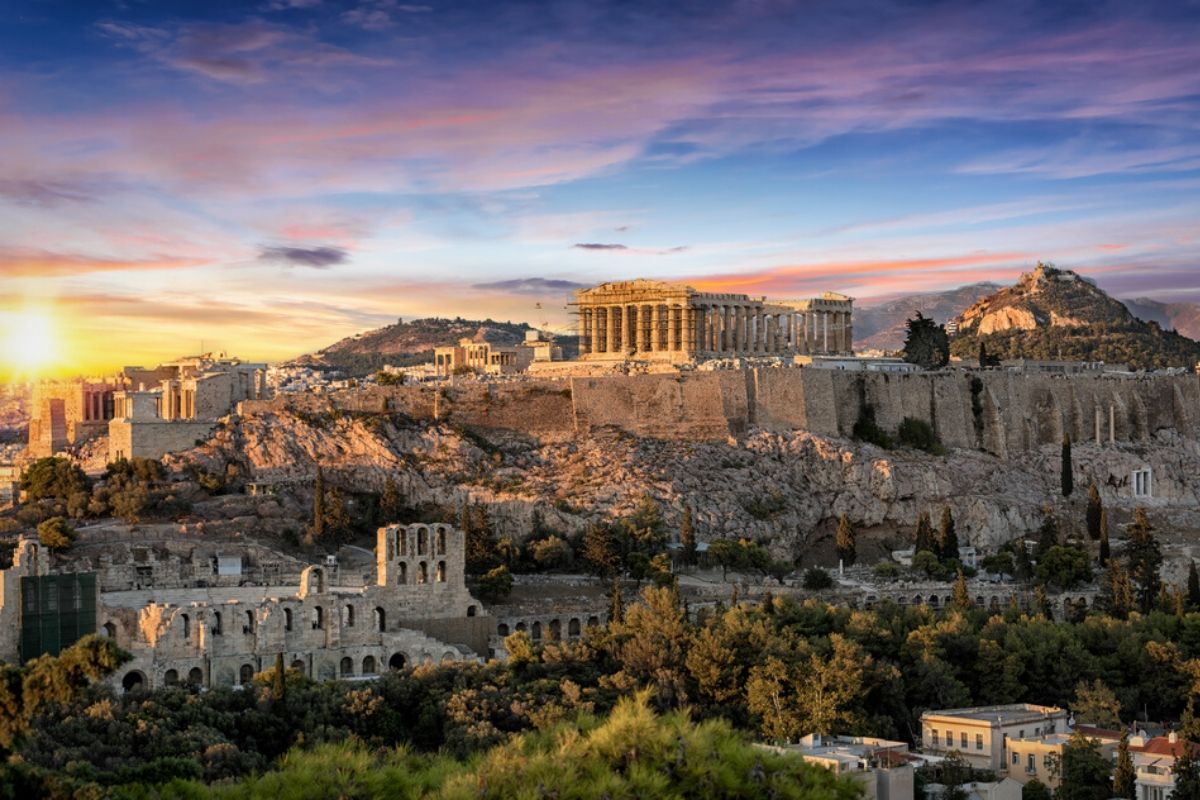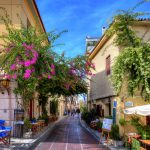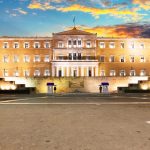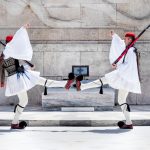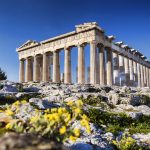Welcome to the historical capital of Europe – Athens, Greece.
Sometimes you only have a limited time to see a city. But if you’re really determined to make the best of it, you can do a lot. After visiting the capital previously, we planned to only spend eight hours in Athens being clear on what we wanted to revisit.
Firstly, take public transport – this helps to quickly understand the culture of the people and rhythm of the city. You meet real locals on public transport and can really observe how they do things.
My go-to in a new city is a hop-on hop-off bus; most big cities have them. However, be warned, the tours are only as good as the city they are traversing. They visit the main sites in the city and have a commentary in different languages giving a potted history of the city, pointing out the main points of interest and offering an opportunity to hop off for a better look.
Depending on the city and the time you have, you might not be able to see everything you want to, especially if you are hopping on and off the bus. When you get on you are given a map. Have a quick look through it, decide which are the points of most interest and make sure you allocate your time accordingly.
The Plaka is a well-contained area of small gift shops offering souvenirs from hand embroidered tablecloths and napery to intricate local jewellery, scarves, t-shirts, pottery, clothes, leather shoes and a range of other specialty items. If you have only a limited time and need to buy presents for those at home, there is plenty to choose for everyone. Be sure to haggle – it’s part of the fun.
- Plaka Athens, Greece. Photographed by Anastasios71. Image via Shutterstock
- Greek Parliament Athens, Greece. Photographed by TTstudio. Image via Shutterstock
Athens is known as a walking city and the Plaka is a winding walking shopping stretch. Cars occasionally move through the area but it’s not common. While there are many shops selling similar products my advice is to buy what you see when you see it if you want it, because sometimes it can be hard to trace back to find a specific shop.
Some of the most atmospheric tavernas are also there – with tree-covered outdoor seating areas and views of the historic excavations which seem visible on every street corner. To have a Greek salad in Greece (where it’s just called salad!) is an experience with olives and feta layered over the freshest tomatoes and cucumbers. The seafood offerings of calamari, octopus and prawns are also to be savoured. Souvlaki, roast lamb and moussaka all remain perennial favourites and a little wine or retsina in the hot sun is a proper Greek treat.
Close to the Plaka is the Greek Parliament and Syntagma Square. Originally built by Ludvig I of Bavaria, the parliament building was a home for Greek monarchs from its construction in 1843 to 1922 and is often still referred to as the Old Palace. In 1924, after a referendum abolished the monarchy, the building was used for a variety of government and public service uses and 10 years later, since 1934, it has housed the Greek Parliament. In front of the parliament building is the Tomb of the Unknown Soldier. With a large relief depicting a nude, dying hoplite. The Tomb of the Unknown Soldier is permanently guarded by Evzones, members of the presidential guard in traditional attire, fustanella. Like the guards outside Buckingham Palace, these soldiers do not move from their positions and make a great “I’ve been to Athens” selfie. Changing of the guards occurs on the hour and looks like a very slow dance where the soldiers kick their feet off the ground and in to the air. At 11am on Sundays the ceremony becomes more elaborate with a marching band and additional guards.
- Tomb of the Unkown Soldier Athens, Greece. Photographed by Rolf G Wackenberg. Image via Shutterstock
- Acropolis Athens, Greece. Photographed by Samot. Image via Shutterstock
Finally, no visit to Athens is complete without a trip to the Acropolis, the Parthenon and the Acropolis Museum. Dating back to around 495BC, the Parthenon is the main construction on the Greek hill which sits above the city. At the centre of the Acropolis is the Parthenon or Temple of Athena. It is regarded as one of the finest examples of Greek Doric architecture. It has an amazing history changing with the climate of the country. Throughout time it has been a Greek temple dedicated to the goddess Athena, a Christian Church, and a Mosque.
Sitting a the foot of the Acropolis is the Acropolis Museum which opened in 2009. Home to over 4000 antiquities, the museum houses a range of artifacts from the Greek Bronze Age to Roman – all which were found on the rock and surrounding slopes.
There are two entrances for visitors to the Acropolis. The main entry is extremely crowded and the queue for tickets can take anything from 20 to 30-minutes to reach the entrance. On the day I visited, it was free and this increased the crowds exponentially, especially as there was a large ship in Piraeus (not uncommon). Walking up the moderate incline was not difficult, although it was slippery as the ruins are mainly marble. Once we ascended towards the Parthenon the crowds seem to bottleneck and we were moved along quickly and discouraged from taking photographs as we may impede other visitors. Best to do it outside the hot summer months – the sun can be searingly hot and there can a thick smog. However, the Acropolis is magnificent and the incredible architecture and history are breathtaking to view and to take in.
And thus completes the eight hours, enjoyably.
Feature image: Athens, Greece. Photographed by Sven Hansche. Image via Shutterstock

